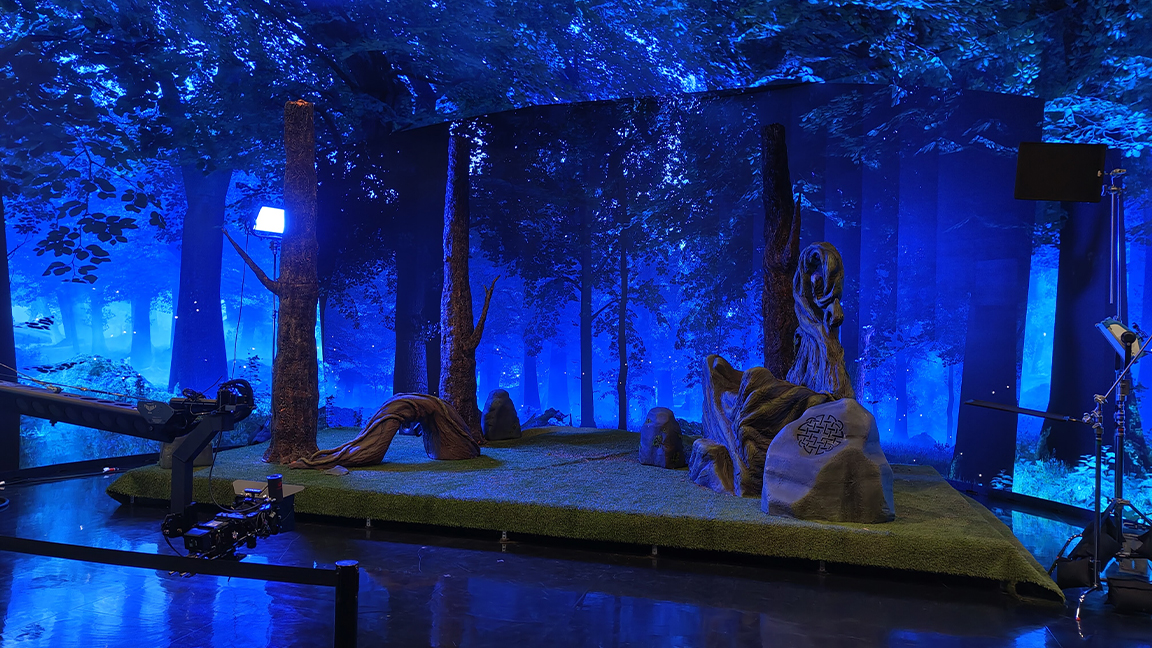
Outside it's a beautiful warm sunny day in Atlanta, Georgia. Inside I'm standing in a forest, at night, fireflies sparkle and the wind gently blows through the trees' leaves. Of course, it's completely fake. I'm on an LED Volume virtual set at SCAD and everything is being rendered in real time by Unreal Engine.
An LED Volume stage is a virtual set that brings the outside in, like a middle ground between a traditional film set and a CG green screen, only everything is live and editable in real time. The first was made famous by The Mandalorian, where ILM made use of the tech to create Covid-safe and VFX heavy episodes of the Star Wars series. It's another pitch by Epic Games to make Unreal Engine a filmmaking tool.
The Volume film set I'm standing on is at SCAD - the Savannah College of Art & Design - in Atlanta, and it's the only second university-run LED Volume in the US (the other is at SCAD's Savannah campus). SCAD is a leading university for filmmaking and animation, and I recently met FuseFX's Brian Kubovcik in Atlanta and got some brilliant VFX career advice.
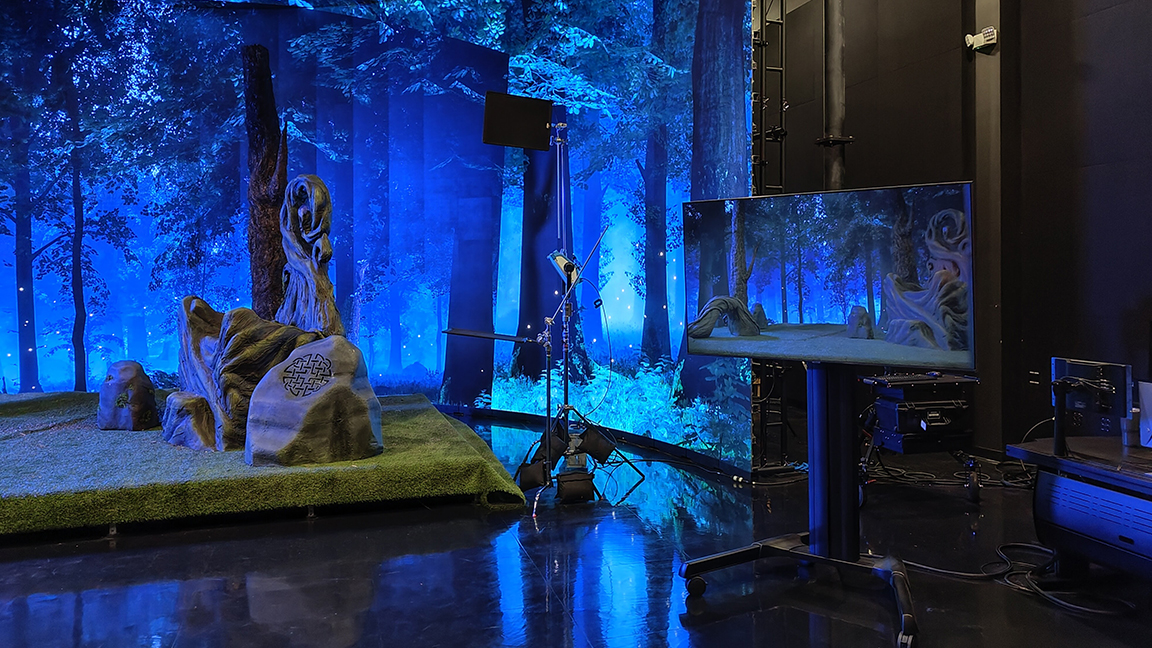
There are many advantages to using an LED Volume, from saving money on expensive location shoots to being able to have total control over a scene. "You can do a lot of shooting right here in one place, where we can control the lighting, we can control the weather," says Jud Estes, associate dean of animation and motion at SCAD, before excitedly gesturing and saying: "Let me just give you guys an example of the power of something like this…"
In seconds the scene inside the Volume changes colour tone and shifts its lighting warmth, Estes reveals adjustments to the scene's fog density and a tweak in the physics means the leaves and trees move more fiercely. These alterations are being made in real time inside of Unreal Engine 5, the platform that is powering these LED Volumes. The aim is to give the filmmaker more freedom to try new things.
Estes explains: "So when a director decides that something's not looking right on set, they really can literally decide to change almost anything in the background of the virtual set."
Obviously there's a caveat, as "just because you can doesn't mean you necessarily should," laughs Estes, "you know, once removed that tree now this shot doesn't match all the other shots that we already did".
Get the Creative Bloq Newsletter
Daily design news, reviews, how-tos and more, as picked by the editors.
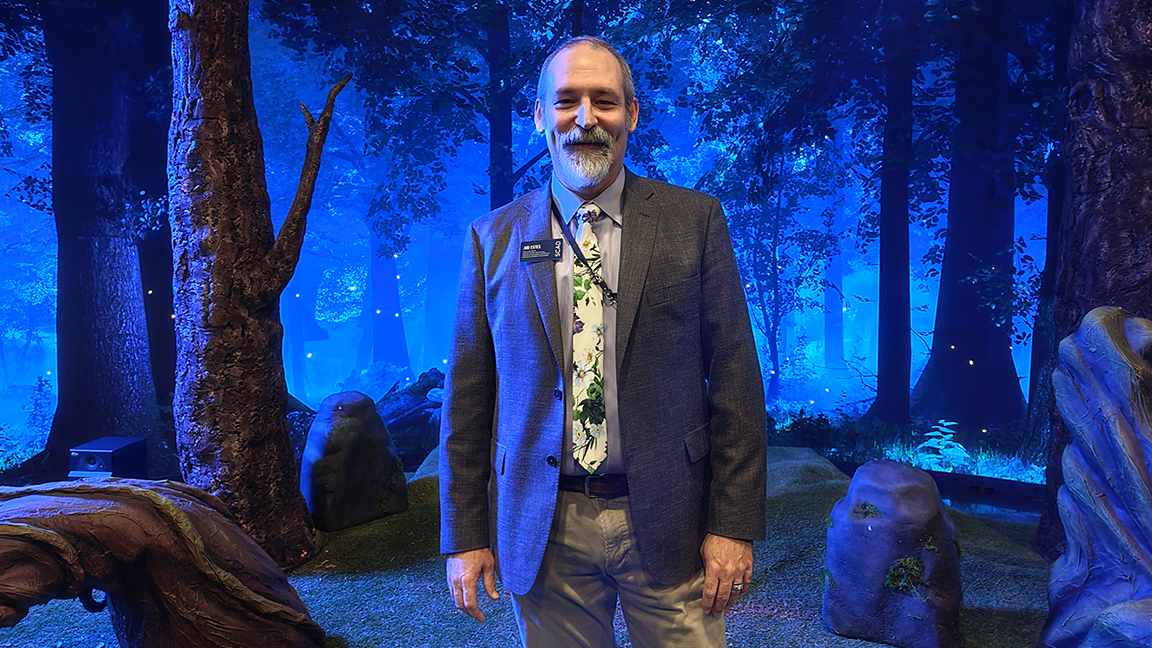
It's called a Volume set for a reason, because once you're on this set the actors are lit in real time by the lights in the scene, those physically in the room and the light sources from the Unreal Engine simulation that surrounds the set.
This approach has actually had an impact on storytelling, says Estes. The team at ILM realised they could get "reflections for free" so the old beat up armour of Bobba Fett from The Empire Strikes Back could be replaced by lore-rich and shiny Mandalorian armour.
"So that's why now you see a lot of Mandalorians have that really shining armour that is just so beautiful in front of this, and you get those reflections for free," says Estes. "So it's even changing the way we're writing our characters at this point."
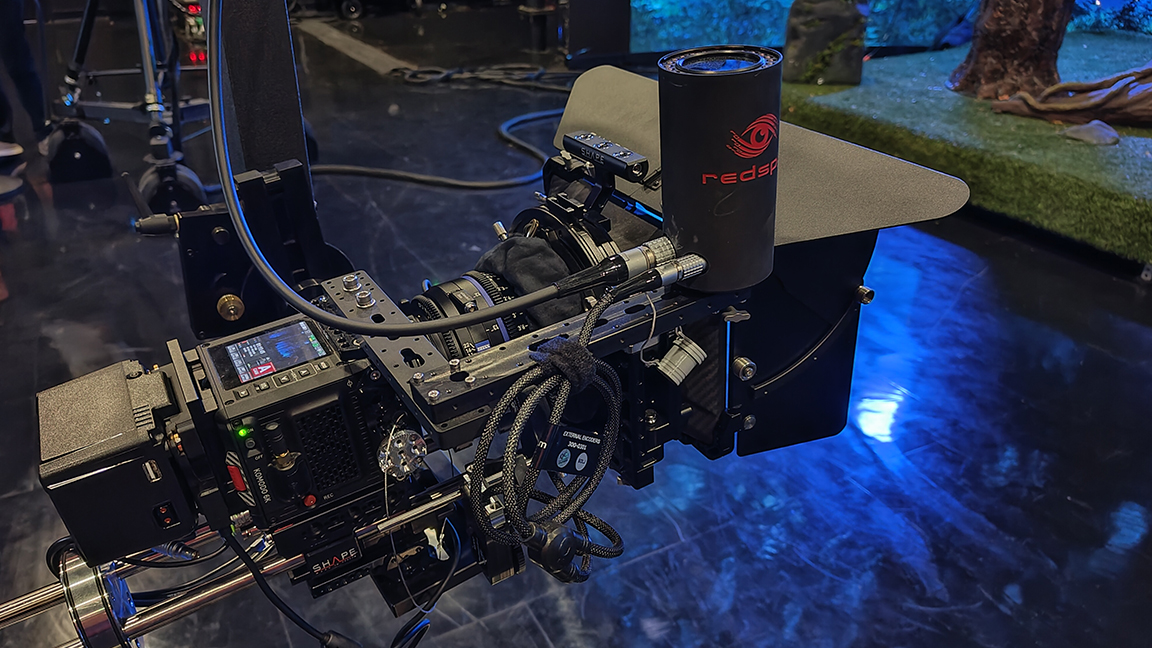
Seeing an LED Volume in action is impressive. The speed of the scene is created with some trickery, with the camera's frustum, the main 'square' of the scene being rendered at full resolution and then a second camera inside Unreal Engine fills in the scene around this at a lower resolution, and as the camera moves it adjusts in real time, at speed. Standing on the stage, it feels like being inside a video game environment and is quite dizzying.
The SCAD LED volume has a 40ft by 20ft by 17ft tall screen display with a 1.5 mm pixel pitch. The stage uses a RED Komodo 6K camera fitted with Zeiss lenses that reads markers on the ceiling. Looking up, the stage's ceiling houses a grid of small white dots that enables Unreal Engine to know where the camera is any time, and what it's looking at.
This means the Volume is a true XR - extended reality - set where virtual objects can be placed in front of and around actors on the stage. The system knows where everything is in the space and adjusts in real time. This means actors can really enjoy performing on a Volume; it can even react to what they do and how they move.
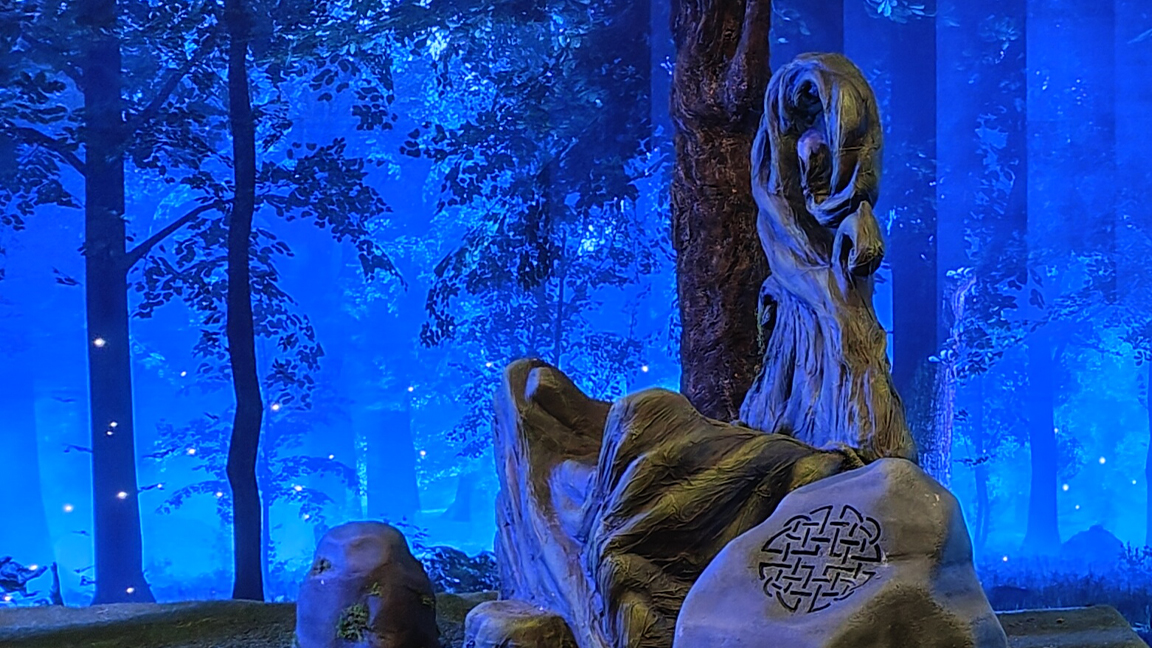
Estes tells me, "there is a way to have what we call 'triggers' inside of Unreal Engine, so when [an actor] does a certain thing, something would trigger and then it would make something happen."
One project SCAD did with its acting students - the university has a School of Filming and Acting complete with a casting office and industry-recognised casting course - was to render a city skyline and have a huge creature move across. "You can imagine that actors love this specifically, because they don't have to imagine what it is, they don't have to imagine that monster, they can see the monster and there it is," details Estes.
It was made famous by ILM and The Mandalorian but the XR setup is becoming more commonplace.
After spending some time on SCAD's LED Volume XR stage I can see why this is becoming one of filmmaking's' most sought-after pieces of technology. It was made famous by ILM and The Mandalorian but the XR setup is becoming more commonplace. I've even discovered some filmmakers are using elements of a Volume set, such as the Red Komodo 6K camera and Zeiss lenses, outside of an XR stage to track shots for VFX, save filming configurations and then remake them in Unreal Engine and other VFX tools.
As more people begin using Unreal Engine for filmmaking there's no better time to learn this developer platform. Read our guide to the best new Unreal Engine plugins for ideas of what it can do, but also be aware that Epic Games is changing Unreal Engine's payment system for non-game developers.

Thank you for reading 5 articles this month* Join now for unlimited access
Enjoy your first month for just £1 / $1 / €1
*Read 5 free articles per month without a subscription

Join now for unlimited access
Try first month for just £1 / $1 / €1

Ian Dean is Editor, Digital Arts & 3D at Creative Bloq, and the former editor of many leading magazines. These titles included ImagineFX, 3D World and video game titles Play and Official PlayStation Magazine. Ian launched Xbox magazine X360 and edited PlayStation World. For Creative Bloq, Ian combines his experiences to bring the latest news on digital art, VFX and video games and tech, and in his spare time he doodles in Procreate, ArtRage, and Rebelle while finding time to play Xbox and PS5.
